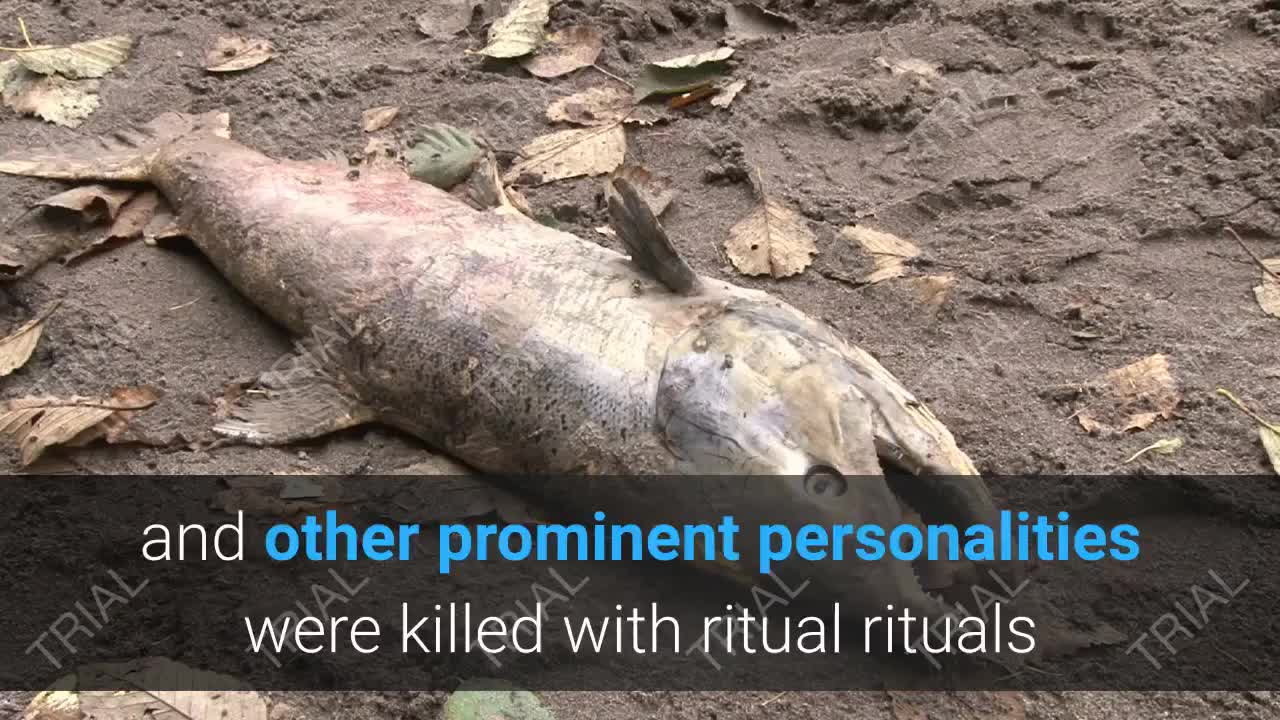Premium Only Content

Secrets of the Pharaohs
When talking about the ancient Egyptians or the pharaohs, many myths and stories that have long been established in the minds of many come to mind, including what is real, and what is just a myth woven by lovers of ancient life.
Within this framework, the "listverse" website published a set of mysterious and new secrets, some of which deny, many ancient theories established by archaeologists, and famous international films about ancient Egypt, both cinematic and documentary.
The following is a review of that group of secrets that was recently revealed according to the latest studies and archaeological research around the world:
10- The beauty of Cleopatra
She is the last queen of ancient Egypt who won the heart of Julius Caesar and Mark Antony, and they are the most important men of Rome. Then you imagine that Cleopatra has exceptional beauty, and she was already on the ground of superb beauty, despite Shakespeare's accounts and studies that stated that her nose was prominent and she had deep eyes and a clear chin But she was skilled enough to bring out the ultimate beauty among her female readers.
9- Aliens
Although many claimed that the most miraculous achievement of the ancient Egyptians was building the pyramids, but murals were found stating that there was contact between the pharaohs and aliens, and fans of the Pharaonic civilization claimed that this is nonsense.
But in reality, this may be true, as the nature of the construction of the Great Pyramid in Giza is astonishing mathematically, as it contained a human miracle in astronomy and architecture at the time, as it was the tallest structure for nearly 4,000 years, and we return to space, as the mural speaks for itself.
8- Sun ship
During the discovery of the Great Pyramid, one of the most important mysteries of the Pharaohs so far, which still contains many hidden secrets, the Sun's Ark was found, and according to the Pharaonic civilization, the king uses it in the afterlife in order to help the sun god "Ra", in his eternal battle with the demon of darkness every Night until dawn comes triumphant in the sky.
7- Hieroglyphs were not primary
The hieroglyphic writing consists of several hundreds of complex but beautiful pictures, and it is possible to say that the hieroglyphs were used to decorate the walls of tombs, temples and texts, but the daily writing was written in a simple language, which is hieratic.
6- Obsessed with death
Most of the readings are confined to the life of the ancient Egyptians with pyramids, mummies and gods, so the closest conclusion is preoccupation with death and the afterlife.
But the fact that what happened to the Egyptians in burying each other is in fact a way to glorify life, and proof of that is the illustrations that adorn the tombs and the ceremonies of agriculture, hunting, and extravagant gold collectibles next to each mummy, and mummification are indications of an obsession with life and not death as is believed by the ancient Egyptians .
5- Decor of the Great Pyramid "Pyramid of Khufu"
Many ancient Egyptian myths said that the Great Pyramid of Khufu from the inside was not decorated, and this belief remained prevalent until a few months ago, when talismans and mysteries were found behind a secret door in the Great Pyramid, and not all of the pyramid was built of the famous 4000-year-old limestone. .
Rather, he found many interior pieces and columns painted in white and red, and writings hidden by the factors of time and erosion, so that remains a distinctive architectural style for the character of the pyramids as the oldest and most famous stone buildings in the world.
4- Servants killed to be buried with their masters
Legend says that the servants of the pharaohs and other prominent personalities were killed with ritual rituals and buried with their deceased masters, to serve them after death, and although this act was abandoned in the last days of ancient Egypt, it was common.
The truth is completely different, that two of the pharaohs of the First Dynasty buried their servants with them, to spread the false myth through 300 other pharaohs, and with the discovery of many tombs, the conclusive evidence of the falsity of the myth was proven.
3- The Great Pyramid was not built by slaves
The historian Herodotus believed in the fifth century BC that the Great Pyramid was built by 10 thousand slaves, and some pictures and sculptures were discovered that illustrate this, but recent studies have confirmed that the Great Pyramid was built by the workforce, numbering 5 thousand workers, and they were free workers They were housed in a makeshift camp, until the construction of the pyramid was completed and these workers received food, drink and medical care in exchange for their work.
And it is logically impossible for slaves to be buried next to the pyramids to honor them, as huge numbers of livestock bones appeared after excavations in Giza, indicating the beef that was provided to the pyramid builders from highly skilled craftsmen, not slaves as portrayed by Hollywood and incorrect beliefs.
2- The enslavement of the children of Israel
Ancient myths say that the Israelites were the slaves of the Pharaohs, but no conclusive evidence of this fact emerged, as the writings and murals did not show that millions of Jews inhabited ancient Egypt, in addition to the flight of many of them after the deterioration of the economic situation in the ancient Egyptian state, but in the millennium BC during Prosperity It is assumed that a group will emigrate from neighboring countries, and of course among them the Children of Israel, and this theory is still not settled until now.
1- The truth of the curse of the pharaohs
Many stories and myths have spread about the curse of mummies, and some of them date back to ancient dates that you may not even think of, even before the tomb of King Tutankhamun was opened, stories about the mummy curse had appeared, the most famous of which was that a group of 26 people participated in opening the tomb of King Tutankham Amon began to die, one by one, in mysterious circumstances. Among them was the same expedition leader who was exposed to blood poisoning.
After the medical examination of the shrine, it was found that germs were present, but none of them is very dangerous, and certainly they have no ability to eliminate the person just because he is in the same place for a short time, but the absence of concrete evidence of the existence of the curse does not deny that the ancient Egyptians did not try their best in this. Of particular.
Many graves were surrounded by symbols that cast their curses on those who worry about the comfort of those lying in the graves, and called on the intruder to be attacked by wild wild animals such as lions and snakes, or for the anger and torment of the gods to attack him.
-
 18:28
18:28
Truth and Logic
4 years ago $0.10 earnedDisaster Prepping Secrets Vol 1
296 -
 0:26
0:26
bushelsperacre
4 years ago $0.01 earnedHarvest Secrets
971 -
 12:45
12:45
Theoklia
4 years ago3 SECRETS TO SUCCESSFUL PR
18 -
 7:42
7:42
KMGH
4 years agoNon-Invasive Cosmetics // Skin Secrets
24 -
 12:32
12:32
Truth and Logic
4 years ago $0.05 earnedShelter Prepping Secrets
221 -
 0:27
0:27
MoneyT0ks
4 years agoI know the secrets!!
270 -
 7:35
7:35
KMGH
4 years agoNon-Invasive Reliable Cosmetics // Skin Secrets
11 -
 LIVE
LIVE
LFA TV
14 hours agoLFA TV ALL DAY STREAM - FRIDAY 9/5/25
692 watching -
 1:08:51
1:08:51
BonginoReport
10 hours agoMass Migration And The Erasure Of British Culture w/ Ian Haworth - Hayley Caronia (Ep.128)
88K33 -
 2:15:11
2:15:11
MattMorseTV
5 hours ago $12.71 earned🔴Trump's MASSIVE Oval Office ANNOUNCEMENT.🔴
36.8K48